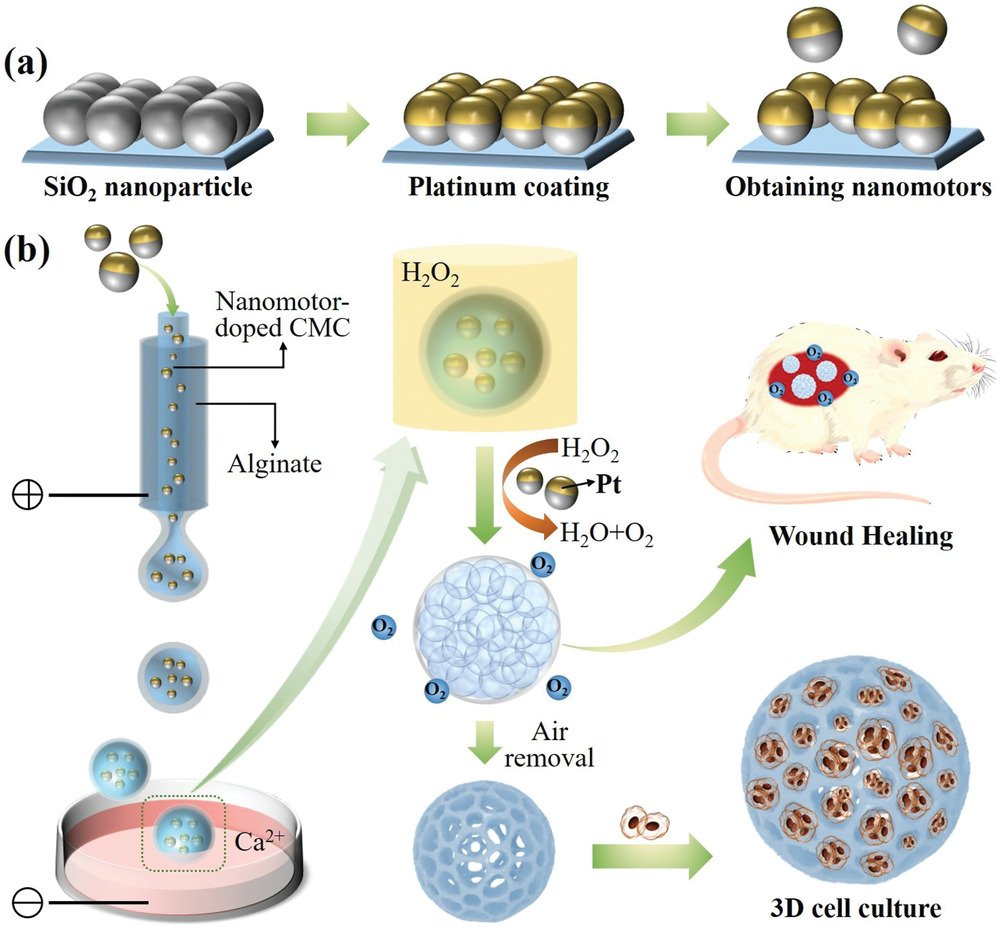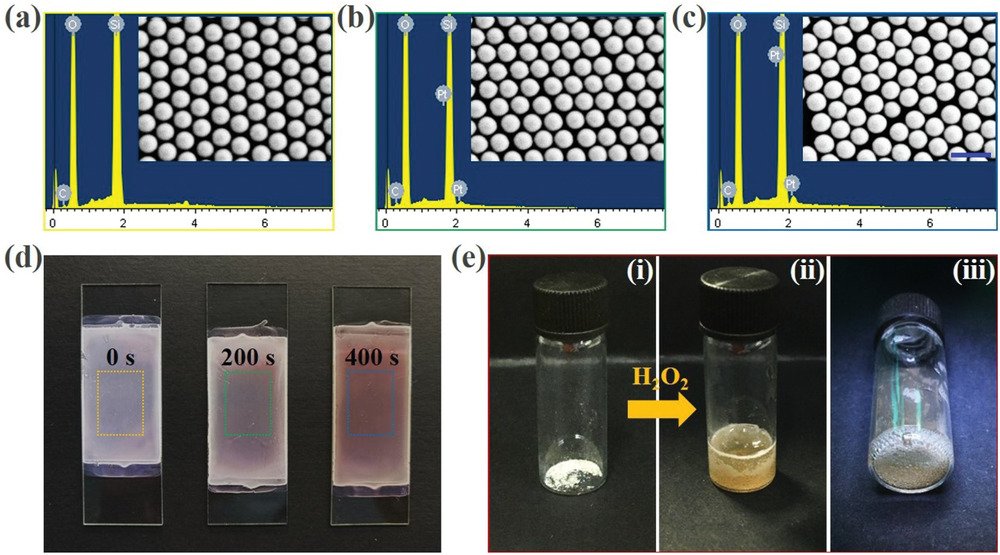
21 Dec Nanomotor-derived porous materials generated using droplet microfluidics
“Porous particles have found widespread applications in therapeutic diagnosis, drug delivery, and tissue engineering due to their typical properties of large surface area, extensive loading capacity, and hierarchical microstructures. Attempts in this aspect are focusing on the development of effective methods to generate functional porous particles. Herein, a simple droplet microfluidics for continuously and directly generating porous particles by introducing bubble-propelled nanomotors into the system is presented. As the nanomotors can continuously generate gas bubbles in the unsolidified droplet templates, the desirable porous microparticles can be obtained after droplet polymerization. It is demonstrated that the generation process is highly controlled and the resultant microparticles show excellent porosity and monodispersity. In addition, the obtained porous microparticles can serve as microcarriers for 3D cell culture, because of their characteristic porous structures and favorable biocompatibility. Moreover, owing to the existence of oxygen in these microparticles, they can be used to improve the healing effects of wounds in the type I diabetes rat models. These remarkable features of the generation strategy and the porous microparticles point to their potential values in various biomedical fields.”

“Fabrication of the bubble-propelled nanomotors: a) SEM images (inset) and the corresponding elemental analysis of the unmodified SN monolayer, b) the SN monolayer after Pt sputtering for 200 s, and c) the SN monolayer after Pt sputtering for 400 s; d) the structural color of the SN monolayers after Pt sputtering for 0, 200, and 400s, from left to right; e) performance of the PSNs after meeting with the H2O2 solution. The scale bar is 500 nm.” Reproduced under Creative Commons Attribution 4.0 International License from , , , , , Nanomotor-Derived Porous Biomedical Particles from Droplet Microfluidics. Adv. Sci. 2021, 2104272. https://doi.org/10.1002/advs.202104272.
Figures and the abstract are reproduced from , , , , , Nanomotor-Derived Porous Biomedical Particles from Droplet Microfluidics. Adv. Sci. 2021, 2104272. https://doi.org/10.1002/advs.202104272 under Creative Commons Attribution 4.0 International License
Read the original article: Nanomotor-Derived Porous Biomedical Particles from Droplet Microfluidics


